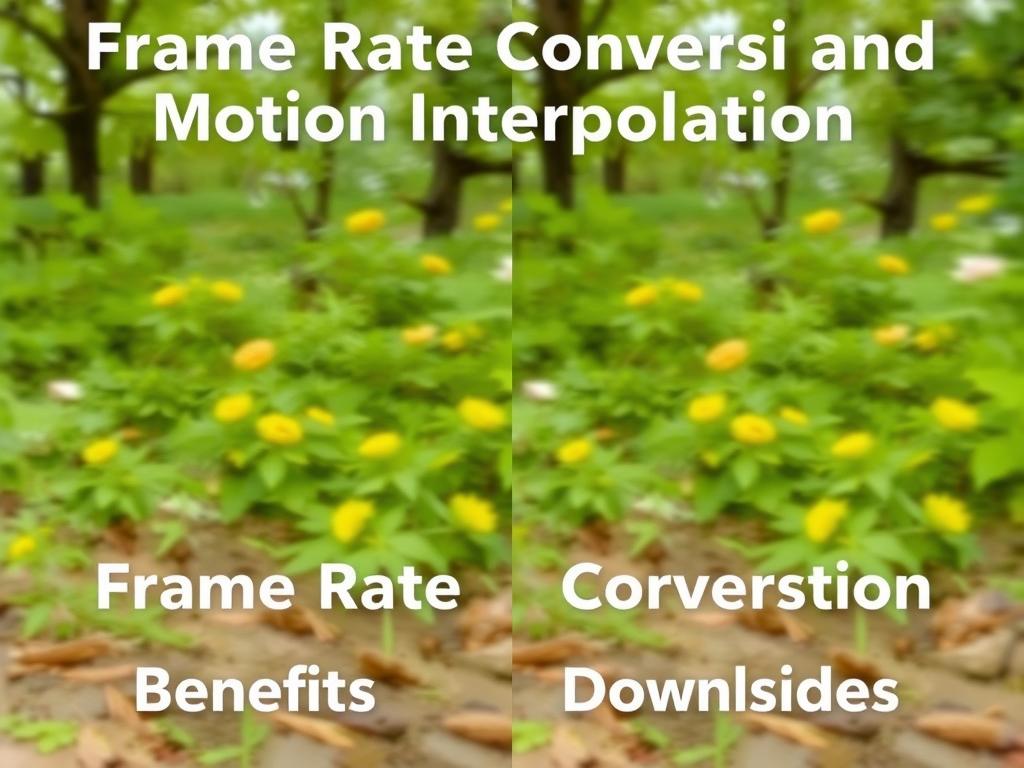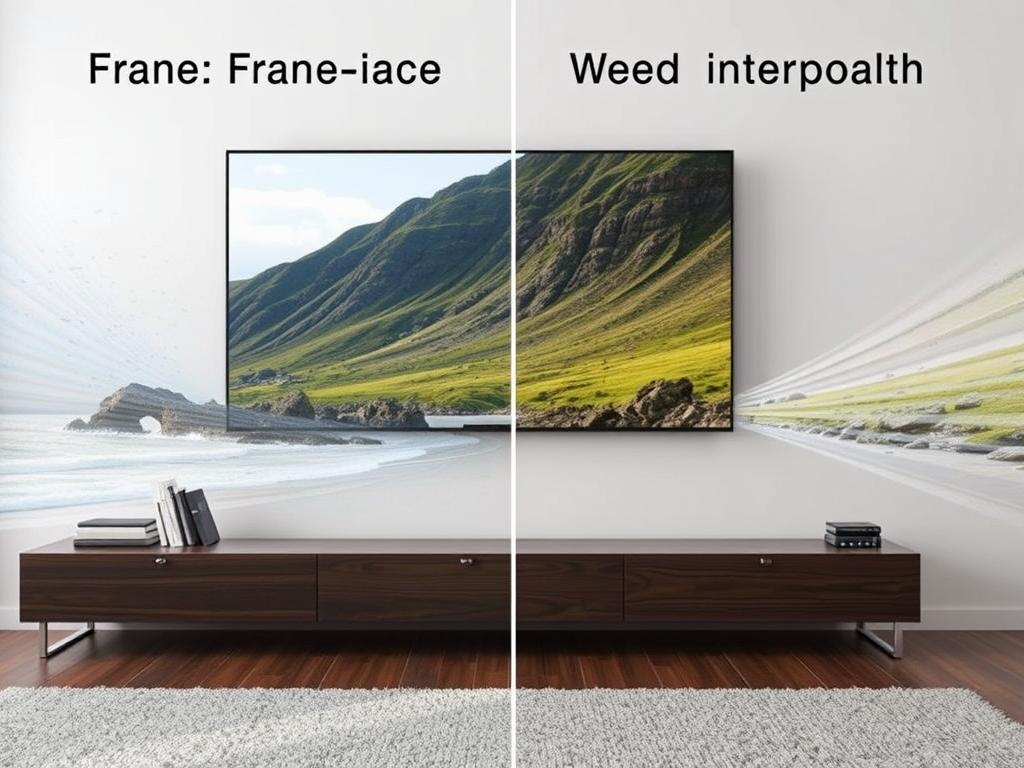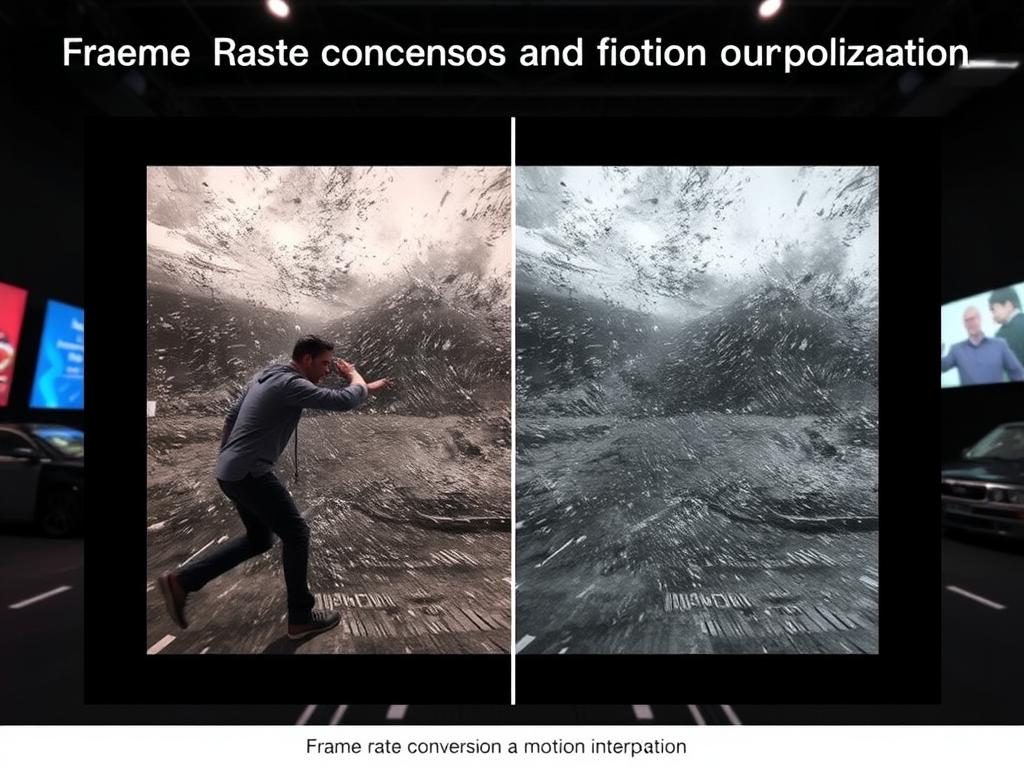If you’ve ever watched a movie or played a video game and noticed how smooth the motion looked, you’ve probably been experiencing the magic of frame rate conversion and motion interpolation. These techniques have transformed how we enjoy visual media by improving motion clarity and reducing blur. But what exactly are frame rate conversion and motion interpolation, and how do they work together to enhance your viewing experience? In this article, we’ll break down these concepts in a simple, engaging way so you can truly appreciate the technology behind the scenes. Whether you’re a cinephile, gamer, or just curious about video tech, understanding these processes will give you new insight into how your favorite content is crafted.
What is Frame Rate Conversion?
Frame rate conversion is the process of changing the number of frames displayed per second (fps) in a video. Different video content and devices use different frame rates, such as 24fps for traditional movies, 30fps or 60fps for TV broadcasts, and even higher frame rates for gaming or VR. When content created at one frame rate plays on a device expecting another, frame rate conversion steps in to adjust the frame count accordingly so the video plays smoothly without lag or stutter.
Imagine you have a classic film shot at 24fps. If you want to watch it on a 60Hz television, the device needs to convert that original 24fps footage into 60fps. This conversion process is critical because it ensures compatibility and smooth playback on different screens, avoiding issues like judder or ghosting where frames seem to jump or blur.
Common Frame Rates and Their Uses
| Frame Rate (fps) | Typical Usage | Characteristics |
|---|---|---|
| 24fps | Movies and Cinematic Content | Traditional film feel, slight motion blur for realism |
| 30fps | Television Broadcasts, Online Videos | Smoother than 24fps, common for TV shows |
| 60fps | Sports, Video Games, High-definition Video | Very smooth motion, ideal for fast action |
| 120fps and higher | High-end gaming, VR, and experimental video | Ultra-smooth experiences, reduces motion blur drastically |
How Motion Interpolation Enhances Frame Rate Conversion
While frame rate conversion changes the number of frames, motion interpolation takes it a step further by creating entirely new intermediate frames to make movement appear even smoother. This technique analyzes the motion happening between existing frames and generates additional frames through complex algorithms. As a result, the video feels more fluid and less choppy, reducing the jerkiness sometimes seen in converted footage.
Motion interpolation is especially useful for content with fast action, where natural motion blur might obscure details or make the image less sharp. It effectively “fills in the gaps” between original frames, enhancing the visual experience without sacrificing timing or sync.
How Motion Interpolation Works
- Motion Estimation: The system identifies the movement of objects or pixels between two original frames.
- Frame Creation: Using this movement information, new frames are generated to appear as if they were captured naturally in-between the originals.
- Smoothing: The artificial frames are blended to maintain continuity and prevent noticeable artifacts or unnatural looks.
This process requires significant computing power and depends on the quality of the algorithms used. Poor motion interpolation can lead to the “soap opera effect,” where footage looks unnaturally smooth, almost like video rather than film, which some viewers dislike. On the other hand, good implementation enhances clarity while preserving the original artistic intent.
Where You Encounter Frame Rate Conversion and Motion Interpolation
These technologies are everywhere, though you might not always realize it. Here’s a glimpse of common applications:
- Televisions: Many modern TVs have built-in motion interpolation that boosts lower frame rates up to 60Hz or 120Hz for a smoother picture.
- Streaming Services: Platforms often reformat content to fit different devices, requiring frame rate conversion.
- Video Games: Game consoles and PCs often use frame rate conversion to deliver fluid gameplay on monitors with variable refresh rates.
- Video Editing Software: Editors use these techniques to match footage from different cameras or create slow-motion effects smoothly.
Benefits and Downsides

| Benefits | Downsides |
|---|---|
| Improved motion clarity and smoothness | Potential unnatural “soap opera” effect |
| Better compatibility across different devices | Increased processing demand on hardware |
| Enhanced viewing experience for sports and games | Occasional visual artifacts from incorrect interpolation |
Tips for Optimizing Your Viewing Experience

If you want to make the most out of frame rate conversion and motion interpolation, here are some practical tips:
- Adjust TV Settings: Experiment with motion smoothing options on your TV and find a balance that looks natural to you.
- Consider Content Type: Keep motion interpolation active for sports or video games, but consider switching it off for dramas or films to preserve cinematic feel.
- Check Device Compatibility: Ensure your playback device supports the needed frame rates for the best picture quality.
- Use Quality Sources: High-resolution and high frame rate originals provide better base material for interpolation.
Looking Ahead: The Future of Frame Rate Conversion and Motion Interpolation

As technology evolves, frame rate conversion and motion interpolation will become even more sophisticated thanks to advances in artificial intelligence and machine learning. AI-powered algorithms can better understand and predict complex motion, reducing artifacts and making interpolated frames virtually indistinguishable from real ones. Furthermore, as displays push beyond 120Hz into 240Hz and higher, the demand for seamless frame rate conversion will increase, especially for gaming and immersive media like VR and AR.
There’s also exciting development in real-time processing, where devices can instantly convert frame rates and interpolate motion on the fly with minimal delay. This progress means smoother streaming experiences and richer interactive content for users worldwide.
Conclusion
Frame rate conversion and motion interpolation are fundamental yet fascinating techniques that significantly enhance how we experience video content across all platforms. By converting frame rates to match different devices and creating new frames to smooth out motion, these technologies work silently behind the scenes to deliver clearer, more enjoyable visuals. Understanding how they function helps you appreciate the craftsmanship involved and make informed choices about your viewing preferences. Whether you love the cinematic artistry of films or crave the fluid fast-paced action of games and sports, frame rate conversion and motion interpolation will continue shaping the future of visual storytelling in exciting ways.